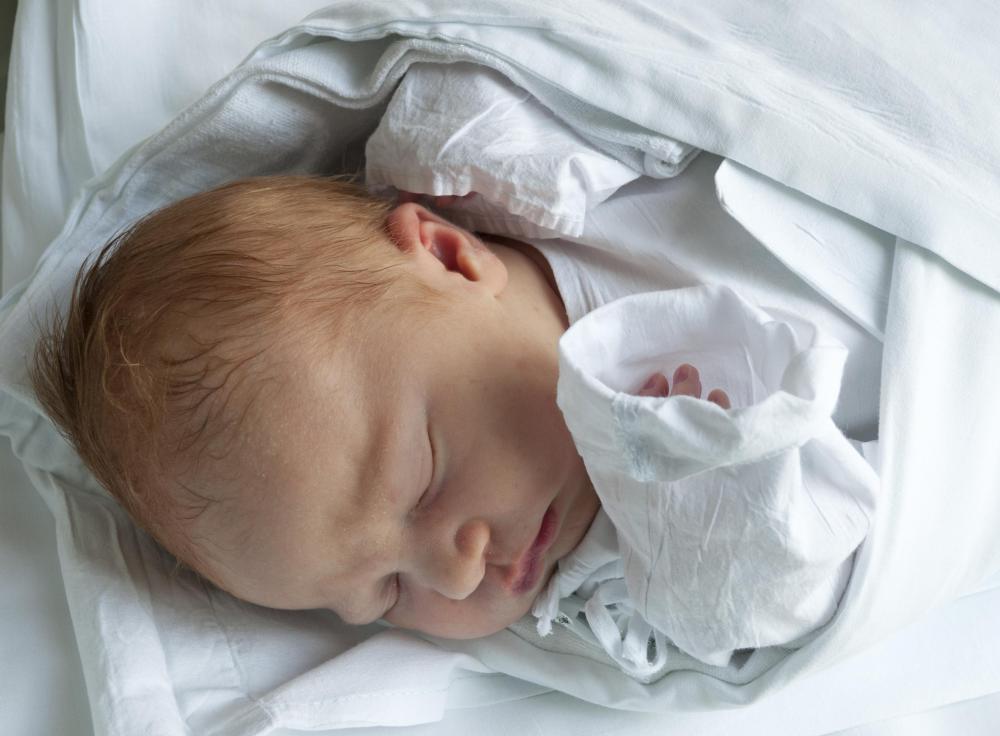At WiseGEEK, we're committed to delivering accurate, trustworthy information. Our expert-authored content is rigorously fact-checked and sourced from credible authorities. Discover how we uphold the highest standards in providing you with reliable knowledge.
What Is Central Facial Palsy?
Central facial palsy refers to a neurological disorder causing paralysis in the middle or lower part of the face; the forehead is usually not affected. It occurs when the seventh cranial nerve that controls facial movement swells from a stroke, brain tumor, or birth trauma. This nerve sends electrical signals from the brain to certain facial regions. Treatment of central facial palsy depends on its cause.
Birth trauma leading to facial paralysis typically appears in the lips of a newborn infant. Signs usually become more apparent when the baby cries because each side of the mouth might move differently. Sometimes the eye on the affected side of the face also looks different. Facial paralysis commonly goes away on its own, but might require therapeutic treatment if it becomes permanent.

Damage to the seventh cranial nerve might occur shortly before birth or during the delivery process. The exact cause is unknown, but several factors might contribute to central facial palsy in infants, including the improper use of forceps during delivery. A long, difficult labor linked to a larger than average baby might also increase risk, especially in diabetic mothers. Certain anesthesia drugs that block pain, along with medication to induce labor, might also damage the nerve.

A stroke might cause central facial palsy by weakening muscles on one side of the face. It could affect muscle movement affecting speech and other muscles on the same side of the body. Strokes are classified as ischemic or hemorrhagic, but both can lead to facial paralysis.
An ischemic stroke occurs if a blood clot cuts off blood supply to the brain for more than a couple of seconds. A clot might appear in a clogged artery in the brain or travel from another area of the body to the brain. Clogged arteries contribute to the risk of a stroke, which happens when plaque builds up inside veins. In a hemorrhagic stroke, blood leaks into the brain after a blood vessel bursts.

The main risk factor for stroke is high blood pressure. Risks also increase in patients who smoke, drink excessively, and consume a diet high in fat and salt. Obesity, high cholesterol, diabetes, and vascular disorders also increase the risk for stroke.
If a brain tumor creates pressure on facial nerves, central facial palsy is possible, along with speech and hearing problems, headaches, and seizures. A tumor develops when abnormal cells grow into a mass. They can be malignant or non-malignant and lead to swelling of the nerve.
AS FEATURED ON:
AS FEATURED ON:














Discuss this Article
Post your comments